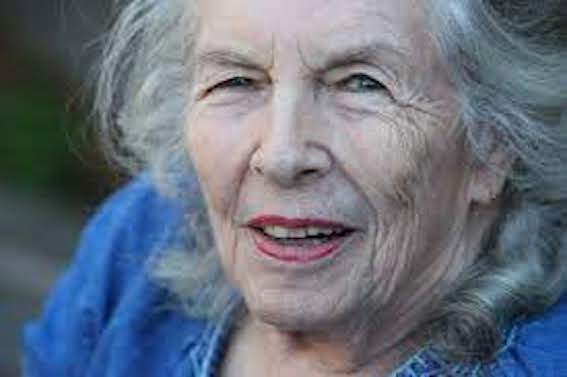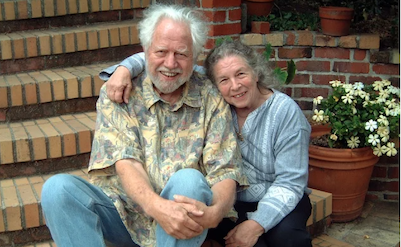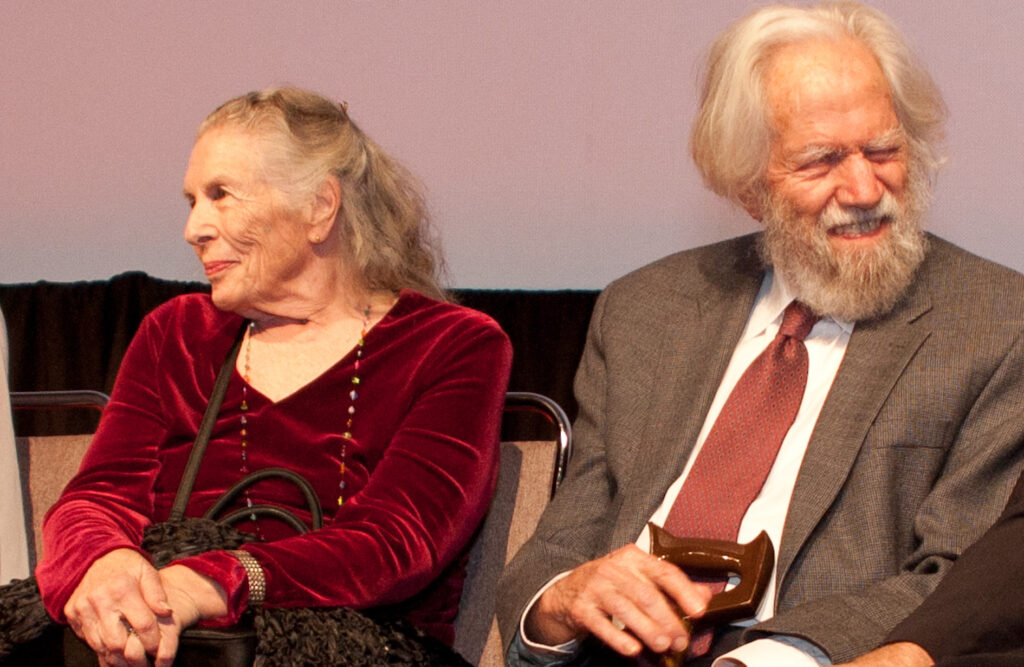Although she is commonly remembered for the work that she and Dr. Shulgin completed together, including numerous groundbreaking books and publications, she also made her own important contributions to the field, most notably in the realm of psychedelic assisted psychotherapy and integration.

Early Life
Laura Ann Gotlieb was born March 22nd, 1931, in Wellington, New Zealand. Her father was the U.S. consul in Trieste, Italy where they lived for the early part of her childhood. After World War II broke out her family moved between the U.S., Cuba and Canada. She studied art, became an artist, married 3 times and had 4 children. In 1978 she went back to work as a medical transcriber. This was where Ann met her match in Dr. Alexander ‘Sasha’ Shulgin. They married in their backyard on the 4th of July.

A Psychedelic Marriage
The Shulgin’s marriage was looked upon by many as the perfect pairing. A kind, eccentric couple who were happy to share their fascinating lives with friends, researchers and journalists alike. Their meeting in 1978 was not the only thing that year that would change the course of both of their lives. 1978 was also the year that Sasha was introduced to MDMA. He had heard tell of it before, as a tool to induce empathy and self analysis. Sasha is credited with reintroducing it to the world, finding an easier way to synthesize it. He also invented many of his own psychedelic concoctions such as 2CB and Aleph, that are still psychonaut favorites today. A chemical genius, he was quickly stuck with the nickname he looked upon dubiously — the ‘Godfather of Ecstacy.’
MDMA Exploration
Ann was deeply involved in the exploration of Sasha’s substances. He would first test them on himself, and if all went well bring them to Ann. After her sampling they would share them with their trusted friends and fellow researchers to try and review. Through these experimentations Ann became familiar with these substances, identifying their potential as a therapeutic tool.

“There is something about the MDMA that allows for the knowledge of what is going on inside yourself to come up, but at the same time, it gives you this feeling, not just that you are able to accept yourself, but this feeling that God and the universe truly do hold you in its hands with love. That you are a treasure. This knowledge, this certainty, that you are whole, with your dark, light, good, and bad. You are of infinite value. This is the greatest gift anyone could be given. In this case, MDMA is the greatest thing to happen to the world of psychotherapy.”
Therapeutic Work and the ‘Shadow’
Ann worked as a ‘lay’ therapist — i.e. she had no formal training or diploma. However, she had an innate aptitude and skill. She used Jungian theories to explore the psychedelic consciousness she grew to know so well. She developed extensive theories based on Jung’s concept of the ‘Shadow’. The shadow-self is the made up of the parts of ourselves that we have repressed or hidden due to societal pressures, our upbringings, our environment, or any number of other factors. Despite being pushed out of sight these elements remain part of ourselves, and can burst out when we are upset, angry or under pressure.

Ann Knew Psychedelics Could be a Tool
In the lineage of Jung’s work, Ann believed that these shadow selves had to be acknowledged and integrated for a patient to truly heal. She also believed that psychedelics such as MDMA were a key tool to make this happen. Ann was one of the first to discover that MDMA, combined with psychotherapy and/or hypnotherapy could help the patient to explore themselves uncritically and with empathy and love — the very thing our shadow selves need to be integrated. Explaining the transformative power of psychedelics at the 2019 Women’s Visionary Congress she said;
“You can divide people that explore their consciousness with visionary plants and psychedelic drugs into two groups, those who use the materials to have fun and relax, and those who take them as a part of their spiritual path to examine and understand themselves. Most people, to tell the truth, do both. No matter what motivates you to nibble mushrooms or drink ayahuasca tea, sooner or later you’re going to have an encounter with the dragon and demons in your soul”
PIHKAL: A Chemical Love Story
After her years as a therapist Ann moved into writing, lecturing and teaching. Together, she and Sasha authored a number of books and publications. Most notably among them PIHKAL: A Chemical Love Story and TIHKAL: The Continuation. PIHKAL, published in 1991, is a book of two halves. Part one is a fictionalized autobiography of the couple, themselves under the gossamer-thin pseudonyms ‘Shura’ and ‘Alice’. However, it was part two that became notorious. It described 179 psychedelic compounds, many of which discovered by Sasha, as well as detailed instructions on how to synthesize them, their dosages, and bioassays.

The ‘Shulgin Rating Scale’
Part two also included the now-iconic ‘Shulgin Rating Scale’, first published in 1986 in Methods and Findings in Experimental and Clinical Pharmacology journal. Also known as the ‘quantitative potency scale’, it was designed to be a simple way of reporting the effects of psychoactive substances at a certain dosage and a certain time. The ratings were developed by extensive experimentation by Ann, Shasha and their collaborators.
Here is the Shulgin Rating Scale in full, as published in PIHKAL:
MINUS ONE (-)
On the quantitative potency scale (-, ±, +, ++, +++), there were no effects observed.
PLUS/MINUS (±)
The level of effectiveness of a drug that indicates a threshold action. If a higher dosage produces a greater response, then the plus/minus (±) was valid. If a higher dosage produces nothing, then this was a false positive.
PLUS ONE (+)
The drug is quite certainly active. The chronology can be determined with some accuracy, but the nature of the drug’s effects are not yet apparent.
PLUS TWO (++)
Both the chronology and the nature of the action of a drug are unmistakably apparent. But you still have some choice as to whether you will accept the adventure, or rather just continue with your ordinary day’s plans (if you are an experienced researcher, that is). The effects can be allowed a predominant role, or they may be repressible and made secondary to other chosen activities.
PLUS THREE (+++)
Not only are the chronology and the nature of a drug’s action quite clear, but ignoring its action is no longer an option. The subject is totally engaged in the experience, for better or worse.
PLUS FOUR (++++)
A rare and precious transcendental state, which has been called a “peak experience,” a “religious experience,” “divine transformation,” a “state of Samadhi” and many other names in other cultures. It is not connected to the +1, +2, and +3 of the measuring of a drug’s intensity. It is a state of bliss, a participation mystique, a connectedness with both the interior and exterior universes, which has come about after the ingestion of a psychedelic drug, but which is not necessarily repeatable with a subsequent ingestion of that same drug. If a drug (or technique or process) were ever to be discovered which would consistently produce a plus four experience in all human beings, it is conceivable that it would signal the ultimate evolution, and perhaps the end, of the human experiment.
The Legacy of the Shulgins
After Sasha passed away in 2014, Ann became the main figure in continuing their shared legacy. Here to witness the dawn of the new psychedelic renaissance, Ann was on the lecture circuit advocating for psychedelic assisted therapy until only a couple of years ago. She will be remembered as part of a dynamic duo, as well as a psychedelic pioneer in her own right: every psychedelic therapy session that takes place today is indebted to her exploration, imagination, and empathy.

Ann Shulgin: 1931 – 2022





